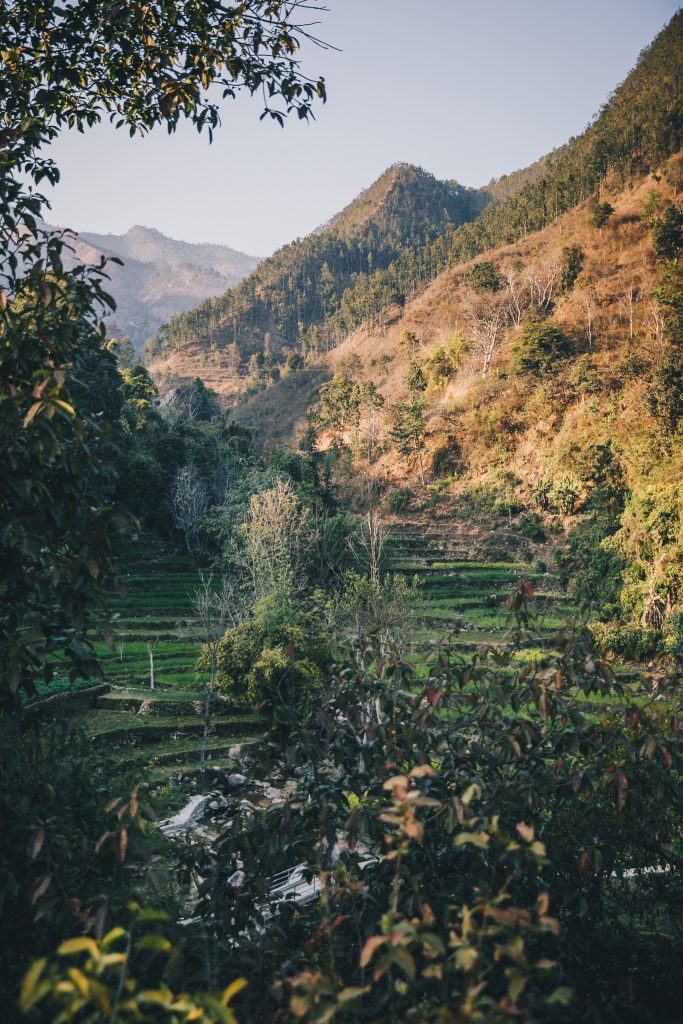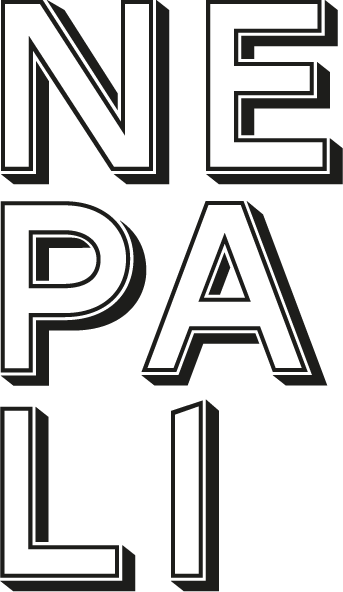After almost two months in Finland after our trip to Nepal, remembering some specific moments of the trip has become part of my routine when I walk to university every day.
I’m still in the process of digesting the whole experience. Kathmandu, Dhungentar, the beginning of a friendship with the students of AITM, the different interactions with the inhabitants of the valley, interviews, photography. Today I don’t want to write about the most shocking moment of the trip, neither the happiest nor the saddest. Today, on my way to the university, I remembered the first walk after our arrival in Dhungentar.


As mentioned in ‘From Kathmandu to Dhungentar’, we were divided into small groups for the small walk. I headed north -I’ve always liked to walk to the north, and even more so when it’s uphill- along with Sumit, Richa, Roosa, Lassi and André. Sumit guided us through some of the facilities built by ICIMOD, and we even ended up having a tea at the Demo House.
Visiting the Demo Farm, an older man with glasses was following but not interacting with us. The sunset light was perfect and I could see the shape of the mountains reflected in his glasses. Then, through gestures I tried to make him understand that I wanted to take a picture of him and he answered by shaking his head to the side. At that moment I felt bad thinking that maybe he felt offended by having asked for a picture without having interacted with him before. Sumit intervened in that moment and told me the words to ask for a photo: photo lina milsa? I asked the older man and he responded with the same movement of his head, saying milsa. So the man agreed from the beginning to pose for a portrait.

As a photographer, my experience in the valley began at that moment. I learned the three words that I would repeat the most during the whole week and, to which I would end up adding a local style head movement. I didn’t want to waste his time, I was nervous and I also couldn’t focus well in his eyes. I didn’t want to repeat the photo and showed it directly. He looked at me, shook his head a little giving me a smile that I’ve not seen at any time since that man had begun to follow us at Demo Farm.
Unsurprisingly, I could not stop asking… Photo lina milsa? Photo lina milsa? Photo lina milsa?




It was beautiful to see how each person who was immersed in their routine accessed to pose and then smiled enormously when they saw the pic. I even started asking the animals… some goats really know how to pose in front of a camera.
I’m glad this happened on the first afternoon. It helped me to realize that only three words, a smile and a couple of gestures is not enough. In this project the photography was going to be a great support for the study to be done and we had to study well how to approach the use of cameras between Koto (Luis Alfonso), Prithivi, Avi and me.

Goat husbandry is one of the main activities amongst the household agriculture (© Carles Martínez 2019)



